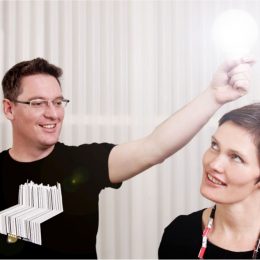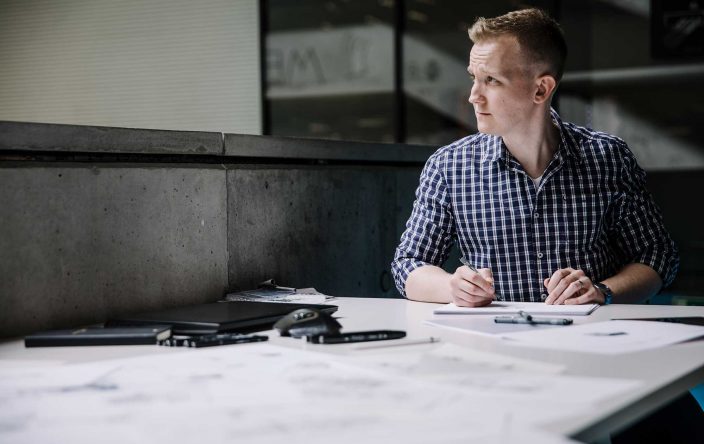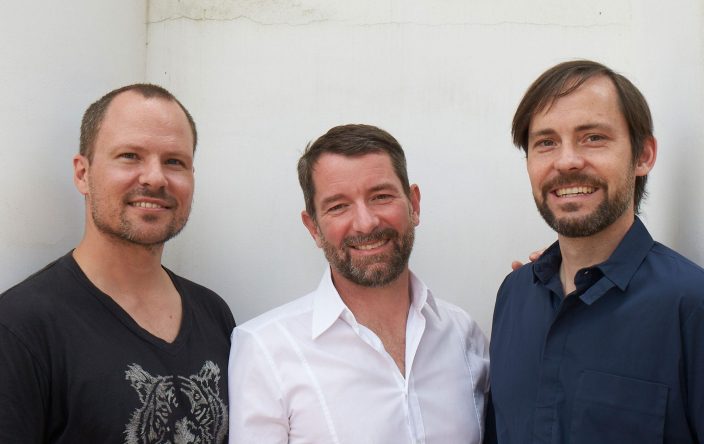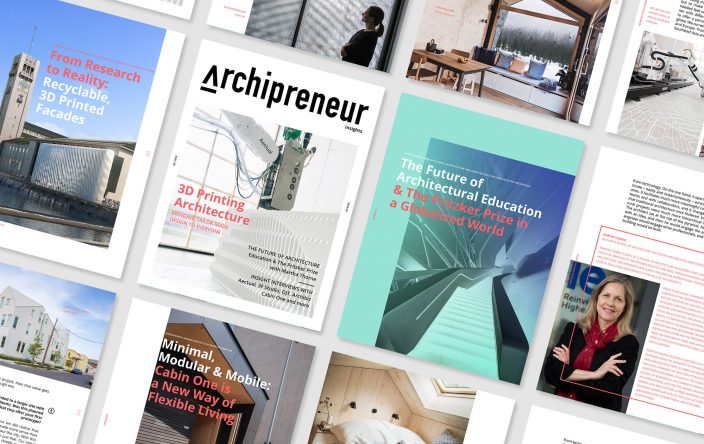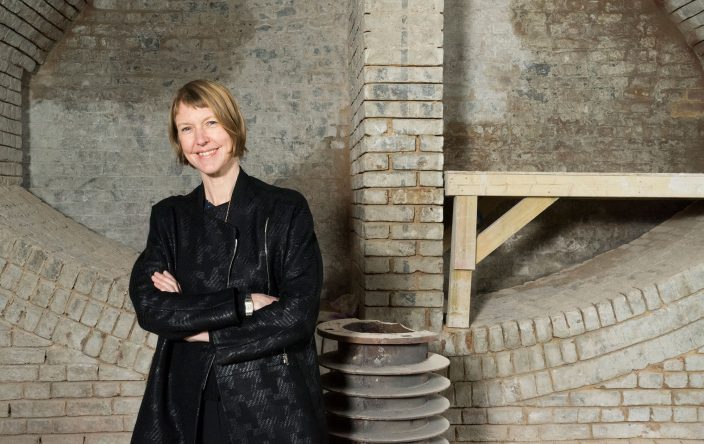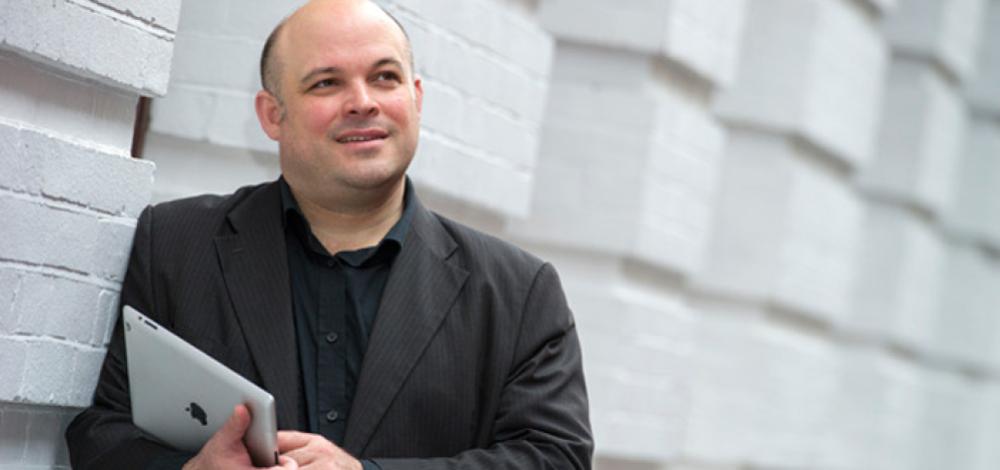
Architect Turns Tech-Entrepreneur: How Michael Kohn Launched His Virtual Collaboration Tool Stickyworld
Archipreneur Insights is an interview series with experts and entrepreneurs in the field of architecture, building and development, highlighting the creative and unusual operations of their businesses and projects. Considering we’re very deep within the age of technology, we also look at how these community leaders have used alternative methods to achieve their career and business goals. Let’s learn, share and (literally) build together.
This week’s interview is with Michael Kohn, CEO of Stickyworld.
Michael had been working as an architect in London when he realized that there was a need for a better and easier collaboration between stakeholders in the process of building. He created Stickyworld, a web- and mobile-based tool that enables projects to be shared, commented on and posted with virtual sticky notes attached directly to the images. The tool makes it easier for everyone to understand the discussion at hand, as well as to capture and evidence new insights from participants during the design and construction process.
Stickyworld has since evolved into a universal participation platform, serving individuals and organizations within and outside the AEC industry who seek to involve others in general online engagement discussions or structured participation processes.
Read on to learn how Michael combined his passion for architecture and computing, and how he built a business from these interests.
Enjoy the interview!
Could you tell us a little about your background?
I studied architecture at The Bartlett School of Architecture. But I had always been a little bit entrepreneurial. I built a house for my mum in my gap year, and after I had graduated I entered a lot of competitions for houses of the future.
As an architect, I was always looking for something slightly outside the norm, and I noticed my architectural concepts were verging more on product ideas than straight architecture. I thought of the architect’s role as an enabler to others to make space, rather than saying exactly how everything has to be. As a registered architect, I worked for Cullinan Studio on large building projects like universities and also masterplans.
I later returned to university to study computing: computational design, parametric, programming, and scripting. After I had finished my studies, I set up a computational design consultancy, selling specialist services to bigger practices whilst teaching professional studies at the University of London.
So, this period for me was a weird mix of part-time teaching the traditional practice of architecture to final year students, whilst myself, I was a total novice as entrepreneur, learning the ropes in tech entrepreneurship, mainly through winning funded research and innovation projects. I think I must be a continuous learner and that helps.

What made you decide to found Stickyworld?
In 2005 I cofounded a practice called Slider Studio together with Renee Puusepp. The practice is still running, although now only by Renee Puusepp. We studied computing together, and worked on 3D gaming technology as one of our technology ideas. We did a big project for the Birmingham City Council, delivered as a consultation gaming engine for a housing regeneration project.
The kids loved it because they could jump on a bus and look around and play swapping the architect’s designs around, rather than look at complicated architectural drawings. What we found, however, was that the adults didn’t really engage with the technology. Then somebody asked, “Why can’t I put a sticky note inside your virtual world like I can in the real world?” So that was where the inspiration and name for ‘Stickyworld’ came from.
We were also looking at how you can involve wider groups of people in feedback, discussions, and informing decisions.
There was an understanding that there was a big untapped market for technologies that involved those wider groups.
That didn’t necessarily mean citizens. For instance, when I was working in a practice it was really hard to get a client and the client’s clients and all those other stakeholders into one room so that you can get your drawings signed off and the team gets paid. We realized that there was a missing piece in the software market for technology that would focus exclusively on those wider groups.
How do you finance your startup? Any tips for our community on how you managed it?
It was a fairly normal method: At Slider Studio we took on some ‘normal’ architectural projects that kept us alive. In addition, I was teaching three days a week.
Then we started applying for research and technology grants and competitions. We won a couple of those, got some investments, and then Stickyworld was founded as a business. Since then, it’s been a mix of commercial sales and larger project work to develop the technology for clients and some more technology competition wins. It’s a real mix. You have to scrap in the startup world.
You developed a web- and mobile-based tool that allows more voices to be heard during the design and construction process. Could you give us some examples of how the tool is used and how it helps architectural practices?
Stickyworld gives a little bit more transparency to the types of issues that architects are grappling with. Because design is not a black and white thing, is it? It’s a negotiation.
And if you can get more conversations happening, it’s good for the whole process and for the design team because they get validation on what they are doing.
We’ve got an example where local authorities wanted to redesign the streets to improve conditions for cyclists and drivers. The architects used Stickyworld to present maps and photos of the existing area and engage citizens in conversation around what is good or bad, and what could be changed.
Next they followed up with a more formal consultation on their designs, and referencing how the design accommodates the original feedback. Our technology helps designers keep stakeholders informed and involved across all stages of the projects.
Some architects use Stickyworld for internal design reviews. If you are meeting a client face to face or on Skype but you want to share the drawings and have a discussion about those drawings after the meeting, then you can create what is called ‘rooms’ in Stickyworld. In these private rooms you invite your client – and they invite their family, their friends, whomever is involved – to review the drawings and then provide feedback for the design team.
Large contractors use Stickyworld for bid management. It’s a great solution for, say, bringing in 30 different experts into a room to offer feedback on strategies for sustainability and transport on large infrastructure projects. It also enables people to become more involved and share ideas across the platform to all stakeholders. So it’s a pretty wide-ranging tool for a deeper form of collaboration in design and construction.


So, you have quite breadth customers from different industries?
We do. At the moment, we’re trying to stick to the built environment as much as possible in terms of our marketing investment. Stickyworld is a collaboration platform for working with people who are not on your core team so we need to get the message out more.
There needs to be a shift in mindset away from the old ways of project management where everything was kept close to your chest and on a need-to-know basis. The understanding of risk is changing. If you don’t carry out your projects in a more inclusive and transparent way, all you’re doing is carrying that risk. Our customers are not defined by their sector but rather by their recognition of this risk, and the need to solve the problem of collaborating with their wider stakeholders.
The building industry is known for being slow to adapt to new technologies. What is your experience with this?
In the UK, the building industry operates on very low profit margins. It’s broadly measured by ‘start and stop’ capital projects and unlike those industries, like say manufacturing, which invest in continuous process improvement. Not surprising it has relatively low levels of investment in process research and development.
So bringing in new technology and software is hard. But when all the money is spent on delivering a capital project and little is invested in knowledge sharing across the business to drive growth and profit, you get this condition.
But the industry is changing. I went into a big contractor the other day and it was a room of 20 people, where 14 of them were architects. Architects are getting involved in organization wide innovation and sustainability, and they are employed directly by the contractor. I think that’s an interesting career move option for architects working in private practice, working for an international construction firm to get a different view of the industry.
A lot of architects don’t think like that, though. It goes against the ‘romance’ of architecture. But that is the reality. That pattern has been established. So, I think that many architectural practices have been slow to recognize and adopt the business and cultural change that is happening around them, and I know from experience that the education and the professional institutions sets things up too narrowly to maximize these choices for young architects.
They will probably continue to be slow to change for another five years, maybe even a decade, because of their established business model of delivering architectural services.
Speaking of the romance of architecture, what do you find the most fulfilling about archipreneurship, and what do you find the most challenging?
As an architect, I wanted to invent, to change things, and I had an instinct for R&D and investment in new ideas. But I found that, as a practicing architect there wasn’t the scope to do that in a small practice. Maybe in bigger practices there is a bit more scope, but it’s still very difficult to do.
What is fulfilling as an entrepreneur is that, once you’re doing your own thing, at the beginning you are your own boss and you are in charge. But soon after comes a realization that this is not quite true – you’re not actually in charge – your customers are in charge. And that’s the right way. You have to work for your customers every single day to help them get value else they won’t come back. So it’s incredibly hard work, but when customers say they like your product and recommend you to others – that is incredibly fulfilling.
Of course as an architect, if you work for a client, you like the client, have a good rapport with them, and they like your project that can be very fulfilling, too. The switch to entrepreneurship, or more specifically from being a consultant who offered design services, to being an entrepreneur running a product business, is that you have to change your mindset from one of working for one client or a handful of clients and maybe doing really novel and interesting projects, and to working for a larger number of customers, possibly hundreds and thousands and delivering a stable product or service so it works perfectly for them all.
That is a big change in thinking. It’s personally taken me a long time to get my head around and adjust my decision-making.
How has your architectural training helped you in the actual running of your businesses? What specific/transferable skills have proved the most useful?
There were some things I’ve had to unlearn. As I mentioned, I had to unlearn my perception of my role as a consultant to being a product person, and from working with clients to working with customers.
Architects do have great insight across many different aspects of projects, so that has been useful. As an architect, you can work on planning, policy, all the way to handing over a building and getting a sense of how that building functions. It has been useful to have insight of the full life cycle, but I think some of the things that I would naturally do as an architect, and sometimes still do, are maybe wrong.
I’ll give you an example. In the early days, I employed a lot of other architects who, like me, liked using technology. But what you actually need in the startup world is not lots of people who are the same, but lots of committed people with complementary skills.
I had to unlearn certain ways of working, bit by bit. To do that, I had to ask myself some hard questions: Who is my customer? What skills do I need to serve that customer? Who should be in my team? The reality is that you have to keep learning.
But on the plus side for architects, I think the creative/technical balance and the natural desire for knowledge, inherent to a lot of architects, has helped me and surely helped other archipreneurs to learn a different way of working.
Just because you started out as an architect doesn’t mean that you have to finish as an architect.
Do you have any advice for archipreneurs who want to start and build their own business?
If you are currently in a job, before you jump ship, go and read all the books you can and go to the tech community’s startup events. Not all companies are going to be tech companies, but they’ll all have tech as an element of their work. Whoever calls themselves archipreneurs will have tech in their lives. Go and mix with ideas and people outside of architecture. You’ll learn about yourself in the process. You’ll also learn whether you are ready to jump onto the startup rollercoaster.
Once you have some ideas bouncing around, find some cheap ways to test them out. Identify with and understand your customer as early as you can. Build a team whose skills you need to serve that customer. You are probably going to have to do all of it yourself until you find co-founders. There is no shortcut to this.
In which areas (outside of traditional practice) can you see major business opportunities for up and coming architects?
There are lots of opportunities in the industry. If you’re listening to and watching new developments and you’re savvy about the opportunities available, then you will be able to find out about the new things happening in the industry, often with big contractors. I see some architects changing how they’re delivering their service, and how much of a service they need to give in order to add value. I see a lot of architects becoming product designers.
All the star architects have a product and a brand. Those things may not be immediately possible or desirable for the majority of the smaller architects but I would recommend thinking of it like a pattern: if you understand what your skill is and where there is a gap in the market, then you can define what it is that you do.
I was talking to a friend of mine who works for a very big practice. He says, “We are becoming a little bit like a big design consultancy, more like an ad agency than a traditional architect. And we’ve got an international growth model,” and it’s happening because they’re listening closely to what their clients want and who their clients are. And that is key: if you want to be entrepreneurial then you have to look at the market. But you also need a sense for serving a customer or client base.
The traditional model of architecture, as I learned when I was at university, is that the architect is right, the architects sets the vision, and the architect tells everyone what the vision is. I think this is a dead idea, we have to move on. Some people will lament it but I think it’s a really good, healthy thing.
Why be constrained by the traditional norms of practice and what people told you architects should be? You have to redefine it in order to stay current and get the clients and customers you want.
About Michael Kohn
Michael Kohn is founder and CEO of Stickyworld Ltd, a visual customer collaboration platform that makes it easy for organizations to involve wide groups of people in making better products, services, buildings, places and cities together. Founded in 2010, Stickyworld has attracted a growing number of customers from local government, energy and utilities, construction, architecture and design sectors. A former architect, Michael’s career spans 20 years including award-winning concept design work, administration of multi-million pound construction projects, university research and lecturing, and collaborative technology.
Whilst Michael is no longer a practicing architect he likes to think that his work is contributing positively to a more user-centered design of the real world and his company has big growth plans for 2017.
Join our Newsletter
Get our best content on Architecture, Creative Strategies and Business. Delivered each week for free.

JOIN THE
ARCHIPRENEUR ACADEMY
- 9 Stage Studio Growth Roadmap
- Library of In-Depth Courses
- Checklists and Workbooks
- Quick Tips and Tutorials
- A Supportive Online Community




